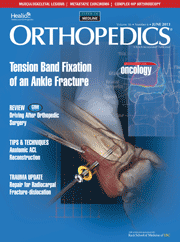
ARTHROPLASTY
PSI and conventional instrumentation yield similar incidence of malalignment in TKA
Orthopedics. 2015 Apr 1;38(4):e305-137 randomized control trials (RCTs) and 11 non-randomized control trials (nRCTs) assessing differences between patient-specific instrumentation (PSI) and conventional instrumentation (CONV), in terms of incidences of component misalignment in primary total knee arthroplasty (TKA), were included in this study. Results determined that the occurrence of outliers - defined as those with alignment 3° from the desired position - was similar between the two groups. No significant difference was seen in the incidence of malalignment in terms of the mechanical axis, femoral and tibial components in the coronal and sagittal planes, and femoral component rotation in TKA.
Unlock the full ACE Report
You have access to {0} free articles per month.Click below to unlock and view this {1}
Unlock NowCritical appraisals of the latest, high-impact randomized controlled trials and systematic reviews in orthopaedics
Access to OrthoEvidence podcast content, including collaborations with the Journal of Bone and Joint Surgery, interviews with internationally recognized surgeons, and roundtable discussions on orthopaedic news and topics
Subscription to The Pulse, a twice-weekly evidence-based newsletter designed to help you make better clinical decisions
Exclusive access to original content articles, including in-house systematic reviews, and articles on health research methods and hot orthopaedic topics
Or upgrade today and gain access to all OrthoEvidence content for just $1.99 per week.
Already have an account? Log in


Subscribe to "The Pulse"
Evidence-Based Orthopaedics direct to your inbox.
{0} of {1} free articles
Become an OrthoEvidence Premium Member. Expand your perspective with high-quality evidence.
Upgrade Now












































































